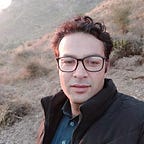How America’s First Female Cryptanalyst Busted Nazi Spy Rings
American code-breaker Elizebeth Smith Friedman made history by playing a crucial role in discovering and dismantling Nazi spy rings in Latin America during World War II.
Elizebeth Smith Friedman (1892–1980), America’s first female cryptanalyst, is known for her sharp mind and strong nerves for handling grueling and horrifying situations calmly. She cracked hundreds of codes during her lifetime but is best known for her discovery of a Nazi spy ring in Latin America during the Second World War.
Her work demanded secrecy, so she took those secrets of her duty of deciphering codes of the enemies during World War II to the grave. They did not credit her for her works in her life, but the then director of the FBI, J. Edgar Hoover, took the credit for her daring jobs himself.
Most Americans didn’t know about her extraordinary accomplishments until 2008. In that year the US government declassified records that detailed her involvement in the decoding of the complex codes of enemies in World War II.
“She was a hero and she never got her due. She was this amazing, hidden woman behind so many important secret battles of the 20th century.”
__The Woman Who Smashed Codes: A True Story of Love, Spies, and the Unlikely Heroine who Outwitted America’s Enemies by Jason Fagone
Her life and career
She was born to John M. Smith, a Quaker, banker, and politician, and Sopha Strock Smith in 1892.
She was the youngest of nine children and was loved and favored by her parents. She was one of the two siblings who attended college and was allowed to further her studies of her choice.
Smitth majored in English Literature at Hillsdale College in Michigan and was a Shakespeare enthusiast. She had also studied Greek, German and Latin because of her interest in languages.
She served as a high school principal before being employed by the Newberry Research Library in Chicago by a conspiracy theorist George Fabyan. Fabyan believed Sir Francis Bacon, a renowned English essayist, actually wrote that Shakespeare's works.
Fabyan also believed that Bacon left encrypted clues to his identity in Shakespeare’s plays. Fabyan thought that the discovery may lead to more truths about the age or maybe some historical facts as Bacon was a philosopher, scientist, and highly learned man.
Working at Riverbank Laboratories, Smith met a distinguished staff of translators, code deciphers, typists, acoustics engineers, and students of genetics. She also met William Friedman and married him in 1917. Before they moved to Washington DC in 1921 to render their services to the War Department, they worked at Riverbank Laboratories for the next four years.
A few years later, working with the U.S. Coast Guard, Smith along with her clerk deciphered hundreds of codes of alcohol and drug smugglers who used radio to operate their missions in the Prohibition era.
Smith was also instrumental in discovering a home-grown Japanese spy, Velvalee Dickinson, who ran a successful antique dolls shop and used it as cover for spying for the Japanese. Mrs. Friedman analyzed a message found in a doll and learned that Dickinson was supplying the Japanese about US Naval operations Pearl Harbor.
She was also the first woman to create and lea d a code-breaking team for the US Government.
When World War II broke out, the Navy department took the Coast Guard over in 1941 after the attack on Pearl Harbor. Since women could not run the units, Friedman was demoted and worked under a male boss as was demanded by the job.
Although she didn’t like to work on this front and thought that she is under deployed.
“She isn’t actually thrilled with that mission. She goes on record later on saying that she doesn’t feel she was deployed well during the war.”
— Amy Butler Greenfield,
When US forces busy in the Pacific and Europe. US leaders feared that the Nazi agents would attempt to start coups in Latin American countries to give the Axis bases in the Western Hemisphere.
So, Mrs. Friedman accomplished her greatest mission by decoding the messages sent by the infamous German Enigma machines. She uncovered a grand conspiracy of Nazis trying to bring Argentina into the Axis.
Friedman uncovered the principal spy of the Nazi network, The spy codenamed “Sargo” was Johannes Siegfried Becker.
Thus Friedman found a horrifying conspiracy by spying on Germans with her team and eavesdropped their discussion about the movements of the Allied ships in South America. Her discovery resulted in the dismantling of the network of the German spy rings and eliminated the Axis threat in Chile, Bolivia, and Argentina sided.
“Elizebeth was his nemesis. She successfully tracked him where every other law enforcement agency and intelligence agencies failed. She did what the FBI could not do.”
— Fagone
Her Demise
Although she helped the FBI (Federal Bureau of Investigation) in decoding the messages and contributed her part to fight the war in her own fields. The FBI did not give Friedman credit. She accepted every challenge and faced many difficult situations throughout her career — all in silence.
Instead, Director J. Edgar Hoover claimed that the FBI discovered and busted the German spy rings and successfully negated the heroic role of Mrs. Friedman and her team.
“It was a lie, but it was a lie that worked, and it was the lie that ended up getting written into the history books.”
— Fagone
She died on October 31, 1980, in Plainfield, New Jersey. But before that, on her retirement, she signed a Navy oath to keep the secrets till her death.
She remained true to her oath all her life and never disclosed her secrets to anyone about her job. She remained in the shadows and unknown to Americans till 2008 when documents and photographs of the Friedmans were declassified.
